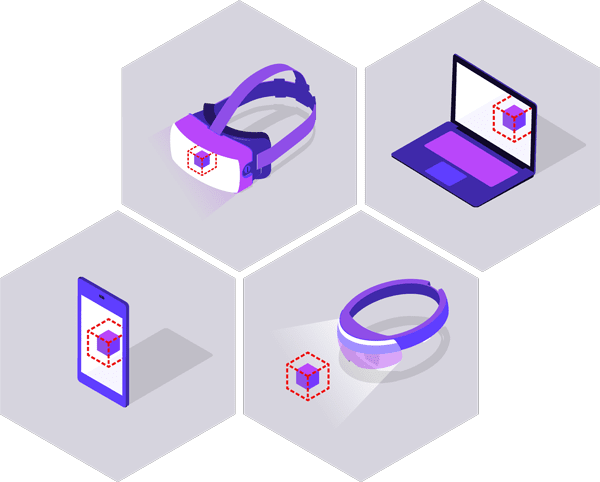As the Covid pandemic has catalysed shifts in business working practices, many companies are now considering more permanent changes by making remote working the new normal. And although remote working can help businesses to attract new talent from around the globe, it also brings the challenge of how to develop the skills and abilities of your workforce at a time when face-to-face training is challenging.
Remote training may just hold the key – and it has the potential to be hugely impactful. But for it to be truly effective, it must be well planned, designed and executed. Moreover, it takes a shift in training culture – simply trying to replicate more traditional forms of training just won’t cut it. So how do you introduce incredible training programmes – and avoid the common pitfalls that could compromise its impact?
Why is Remote Learning Difficult?
Acknowledging that remote learning can be challenging for the learner, trainer and business alike is a great starting point when developing a remote training programme. There are some common reasons why it is difficult to implement, including:
- Having to rely on technology for training delivery can also cause issues. This could range from ensuring that your employee’s internet connection is working on the day, through to getting specific equipment to individuals in time.
- Face-to-face training has less distractions for the learner. Whether it’s work related emails and calls, through to interruptions such as delivery drivers ringing the doorbell, this raises a challenge for trainers to ensure content is engaging.
- Measuring effectiveness can also be challenging for a trainer. In a traditional training setting, trainers can monitor progress, helping individuals if they are falling behind. How do trainers read the room to make sure the training is hitting the mark for all?
- Although some remote training can be undertaken by individuals at a time that works for them, this isn’t the case for group training. This can cause potential scheduling issues for live training sessions; especially if learners are based in different time zones.
Challenges of Remote Learning & How to Overcome Them
The challenges of introducing remote may seem daunting, however any concerns can be significantly outweighed by the benefits of introducing a well thought through and implemented training programme.
If now is the right time to introduce a winning remote learning programme into your company’s training and development portfolio, there are some key steps you should take to avoid costly mistakes.
Designing and developing engaging and content
As they say, content is king. But simply transferring a successful classroom, or onsite course into a remote learning space doesn’t work – the way we learn through screen-based learning is completely different. However, the principles of course development are similar; focussing on learning objectives and outcomes should abe a key driver. To stay focussed on these, you should:
- Create a training brief, clearly setting out your learning objectives. By doing this, you will stay focussed and not get distracted by eye catching options that miss the brief.
- Platforms can often also include useful authoring tools online to help you to format content, flag additional content and introduce interactive elements.
- Get feedback. Before investing time and money in introducing new technologies, test the course concept on potential learners to get their honest feedback.
- Remember to make sessions short and punchy. Our attention spans are shorter when learning remotely, so remember to add plenty of breaks, or consider running modules over numerous days.
Finding the right platform to deliver training
New technologies can have the wow factor and seduce you into selecting a training platform or hardware. Selecting the right platform is crucial to the success of your training – and can, indeed influence content significantly. However, with the incredible number of potential options out there it can be overwhelming – and how do you ensure you choose the right platform for the job? To avoid costly mistakes, you should:
- Refer to your training objectives. What are the learning outcomes? If you’re looking for your learners to develop practical skills, a passive experience such as watching training videos will ultimately miss the brief.
- Match the tech to your learners’ tech abilities. It is pointless introducing a highly complex technical programme if your learner has limited technical skills. Sometimes simplicity is the most powerful option.
- Remember that platforms and hardware go hand in hand. For example, if you are introducing a VR learning platform, can you ensure all learners have access to the necessary hardware – and do you have the budget for new equipment?
- Make sure that the decision making on platforms isn’t just made by your company’s IT team. Procuring the right training software (and potential hardware) needs to include the person or team responsible for developing training programmes, otherwise you risk gaining technology that doesn’t hit the brief.
Practical challenges
Practical issues can prove to be a barrier to the success of remote training programmes. Remember that remote learning may be a new experience for your learner, so making sure they feel comfortable and well prepared is crucial; otherwise you risk them responding negatively. Tech fails also have the potential to scupper even the best designed remote learning course. Remote training is particularly vulnerable to technical issues, given its very nature means it is dependent on a level of technology to be delivered.
While you can’t always predict (and address) the unpredictable, you can pre-empt potential pitfalls and put in key measures to minimise impact of any issues that might arise. Our top tips include:
- Avoiding any surprises for your learner. Circulating clear and concise instructions in advance is essential. Make sure that details such as timings, logins, apps that might need to be downloaded are sent to all participants in good time – and that these are received and understood. It’s also useful to advise on preparing learning spaces to minimise distractions.
- Keeping numbers of trainees to a minimum for live courses. This will help to cope with any IT issues that may arise during the training, but also help the trainer to monitor individual performance and step in where additional support is needed.
- Making sure you have support on hand. IT support for any technical issues and you may consider including additional trainers to help field questions.
Developing team skills
Although we are increasingly working geographically separated from our colleagues, this doesn’t mean we work 100% independently. Remote working means that effective collaborative working is more important than ever. From the moment we enter primary school, learning is a social experience, but when we don’t share a physical space, fostering an impactful group learning experience is challenging. This can be addressed by:
- Creating an inclusive and trusted environment. Start a session by explaining the parameters of the course, how the tech works and how their performance will be monitored.
- Encouraging interactivity. Remote training tools will often have integral tools – from chat on Zoom through to collaborative group working spaces in VR experiences such as Future Visual’s VISIONxR platform.
- Building in group exercises and discussions into course content. Ultimately, work based training exists to improve working practices, so introducing real-world challenges into training experiences will benefit individuals, team and company performance.
Conclusion
Remote training has the potential to be a highly effective addition to your company’s training portfolio, As with any new system being introduced into your company, this can be challenging – and mistakes potentially costly. But the tangible benefits of developing and delivering meaningful training can be transformative on both individual employees and your business alike. Which sounds like a challenge worth accepting.
As the Covid pandemic has catalysed shifts in business working practices, many companies are now considering more permanent changes by making remote working the new normal. And although remote working can help businesses to attract new talent from around the globe, it also brings the challenge of how to develop the skills and abilities of your workforce at a time when face-to-face training is challenging.
Remote training may just hold the key – and it has the potential to be hugely impactful. But for it to be truly effective, it must be well planned, designed and executed. Moreover, it takes a shift in training culture – simply trying to replicate more traditional forms of training just won’t cut it. So how do you introduce incredible training programmes – and avoid the common pitfalls that could compromise its impact?
Why is Remote Learning Difficult?
Acknowledging that remote learning can be challenging for the learner, trainer and business alike is a great starting point when developing a remote training programme. There are some common reasons why it is difficult to implement, including:
- Having to rely on technology for training delivery can also cause issues. This could range from ensuring that your employee’s internet connection is working on the day, through to getting specific equipment to individuals in time.
- Face-to-face training has less distractions for the learner. Whether it’s work related emails and calls, through to interruptions such as delivery drivers ringing the doorbell, this raises a challenge for trainers to ensure content is engaging.
- Measuring effectiveness can also be challenging for a trainer. In a traditional training setting, trainers can monitor progress, helping individuals if they are falling behind. How do trainers read the room to make sure the training is hitting the mark for all?
- Although some remote training can be undertaken by individuals at a time that works for them, this isn’t the case for group training. This can cause potential scheduling issues for live training sessions; especially if learners are based in different time zones.
Challenges of Remote Learning & How to Overcome Them
The challenges of introducing remote may seem daunting, however any concerns can be significantly outweighed by the benefits of introducing a well thought through and implemented training programme.
If now is the right time to introduce a winning remote learning programme into your company’s training and development portfolio, there are some key steps you should take to avoid costly mistakes.
Designing and developing engaging and content
As they say, content is king. But simply transferring a successful classroom, or onsite course into a remote learning space doesn’t work – the way we learn through screen-based learning is completely different. However, the principles of course development are similar; focussing on learning objectives and outcomes should abe a key driver. To stay focussed on these, you should:
- Create a training brief, clearly setting out your learning objectives. By doing this, you will stay focussed and not get distracted by eye catching options that miss the brief.
- Platforms can often also include useful authoring tools online to help you to format content, flag additional content and introduce interactive elements.
- Get feedback. Before investing time and money in introducing new technologies, test the course concept on potential learners to get their honest feedback.
- Remember to make sessions short and punchy. Our attention spans are shorter when learning remotely, so remember to add plenty of breaks, or consider running modules over numerous days.
Finding the right platform to deliver training
New technologies can have the wow factor and seduce you into selecting a training platform or hardware. Selecting the right platform is crucial to the success of your training – and can, indeed influence content significantly. However, with the incredible number of potential options out there it can be overwhelming – and how do you ensure you choose the right platform for the job? To avoid costly mistakes, you should:
- Refer to your training objectives. What are the learning outcomes? If you’re looking for your learners to develop practical skills, a passive experience such as watching training videos will ultimately miss the brief.
- Match the tech to your learners’ tech abilities. It is pointless introducing a highly complex technical programme if your learner has limited technical skills. Sometimes simplicity is the most powerful option.
- Remember that platforms and hardware go hand in hand. For example, if you are introducing a VR learning platform, can you ensure all learners have access to the necessary hardware – and do you have the budget for new equipment?
- Make sure that the decision making on platforms isn’t just made by your company’s IT team. Procuring the right training software (and potential hardware) needs to include the person or team responsible for developing training programmes, otherwise you risk gaining technology that doesn’t hit the brief.
Practical challenges
Practical issues can prove to be a barrier to the success of remote training programmes. Remember that remote learning may be a new experience for your learner, so making sure they feel comfortable and well prepared is crucial; otherwise you risk them responding negatively. Tech fails also have the potential to scupper even the best designed remote learning course. Remote training is particularly vulnerable to technical issues, given its very nature means it is dependent on a level of technology to be delivered.
While you can’t always predict (and address) the unpredictable, you can pre-empt potential pitfalls and put in key measures to minimise impact of any issues that might arise. Our top tips include:
- Avoiding any surprises for your learner. Circulating clear and concise instructions in advance is essential. Make sure that details such as timings, logins, apps that might need to be downloaded are sent to all participants in good time – and that these are received and understood. It’s also useful to advise on preparing learning spaces to minimise distractions.
- Keeping numbers of trainees to a minimum for live courses. This will help to cope with any IT issues that may arise during the training, but also help the trainer to monitor individual performance and step in where additional support is needed.
- Making sure you have support on hand. IT support for any technical issues and you may consider including additional trainers to help field questions.
Developing team skills
Although we are increasingly working geographically separated from our colleagues, this doesn’t mean we work 100% independently. Remote working means that effective collaborative working is more important than ever. From the moment we enter primary school, learning is a social experience, but when we don’t share a physical space, fostering an impactful group learning experience is challenging. This can be addressed by:
- Creating an inclusive and trusted environment. Start a session by explaining the parameters of the course, how the tech works and how their performance will be monitored.
- Encouraging interactivity. Remote training tools will often have integral tools – from chat on Zoom through to collaborative group working spaces in VR experiences such as Future Visual’s VISIONxR platform.
- Building in group exercises and discussions into course content. Ultimately, work based training exists to improve working practices, so introducing real-world challenges into training experiences will benefit individuals, team and company performance.
Conclusion
Remote training has the potential to be a highly effective addition to your company’s training portfolio, As with any new system being introduced into your company, this can be challenging – and mistakes potentially costly. But the tangible benefits of developing and delivering meaningful training can be transformative on both individual employees and your business alike. Which sounds like a challenge worth accepting.































